On the last match-day of Portugal’s first division, Porto awaited Sporting CP. The home side and second-placed still had a small chance of winning the title but needed a win to stay close to leaders Benfica.
Although Sporting were down to ten men after 19 minutes, Porto struggled to create chances from open play. Sporting’s dense block prevented Porto from getting near their goal and, on occasion, the away side even threatened the opposition goal from counter-attacks. Nevertheless, an improved attacking phase led to two goals and the win for Sérgio Conceição’s side.
The following tactical analysis will reveal why Porto struggled against a ten man side. Moreover, we are going to explain how they still turned the game around.
Lineups and formations
Porto started into the match with a 4-1-4-1 formation. Héctor Herrera joined the central midfield again after his ban. Single pivot Danilo Pereira stayed between the two lines of four during the defensive phase and dropped between the centre-backs in possession. Furthermore, full-backs Alex Telles and future Real Madrid player Éder Militão were supposed to move up the line to support the attacking department on the wings.
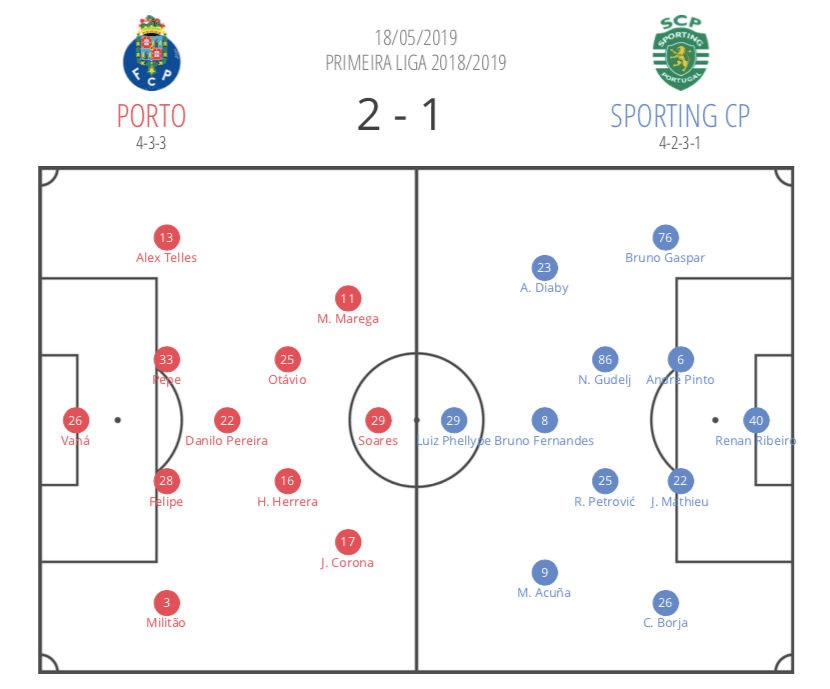
Sporting CP, on the other hand, deployed a 4-2-3-1 system which turned into a 4-4-2 during the defensive phase. Top player Bruno Fernandes took over the role of the playmaker in the Sporting squad. But due to an early dismissal for right winger Jesús Manuel Corona, Sporting coach Marcel Keizer was forced to change the formation of his side to a 4-4-1.
Initial phase of the game
Porto already started the match with the intention to dominate the opposition in possession. In possession, they used a back three formation. Both full-backs pushed high up the pitch on either side. Meanwhile, defensive midfielder Pereira dropped between the central defenders to form the back three. Wide attacker Moussa Marega meanwhile tucked inside to act as another striker.
In contrast to that, Sporting began to press with a 4-4-2 setup and attempted to use fast counter-attacks in order to threaten the opposition goal.
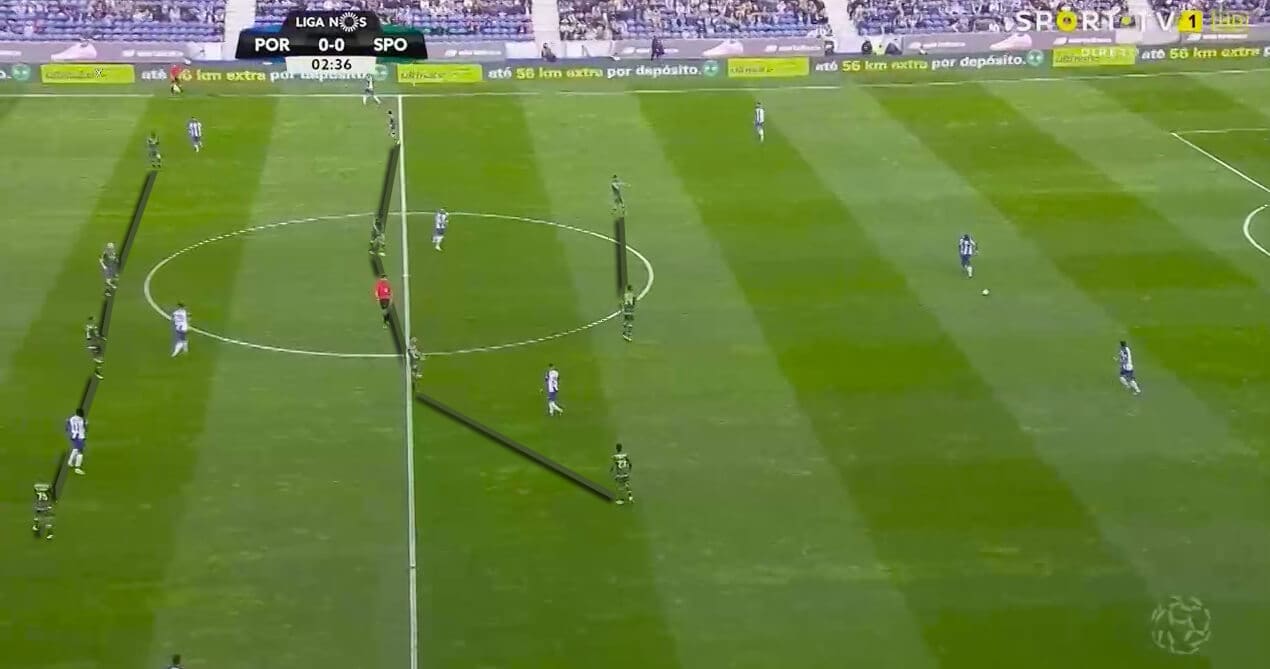
Often, Porto could create a numerical advantage in midfield against the double pivot of Sporting’s 4-4-2 to open up passing lanes into the centre.
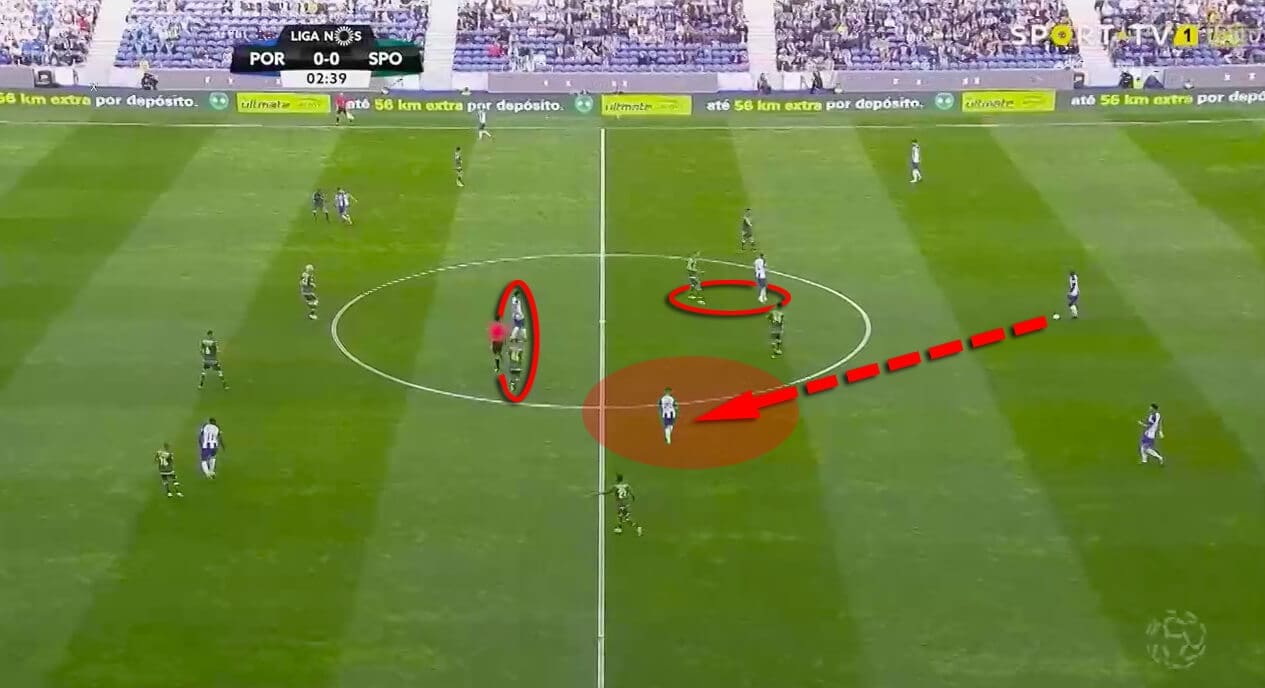
Porto lack attacking threat against a decimated Sporting side
In the 19th minute, Sporting’s Corona was shown the red card for stopping Porto attacker, Marega, as the last man. But with their new 4-4-1 block, Sporting were capable of forcing Porto outside. Although being one man down, Sporting still successfully defended within their own half. And Porto were neither able to get between the lines nor behind the opposition back line.
As Sporting played with one less player, Porto changed their system to a 4-4-2 as one can see below. With Marega constantly playing as a striker, Porto aimed at threatening Sporting’s goal with further attacking power.
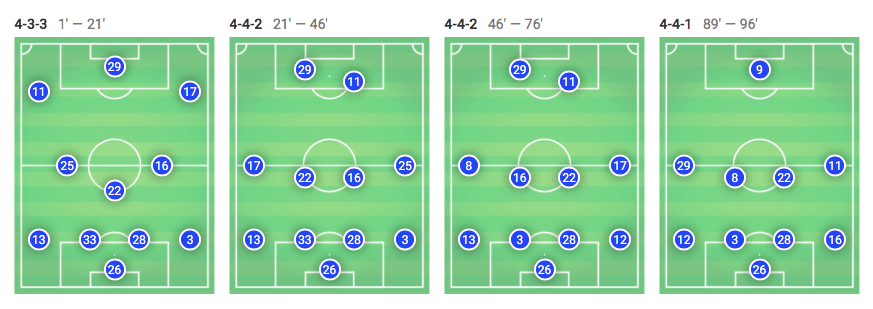
However, this system did not solve Porto’s main problems in possession. One of these issues was that they failed to occupy the space between the lines. They often had a lot of players positioned in front of Sporting’s midfield line. But Conceição’s team missed central players between opposition midfield and defence.
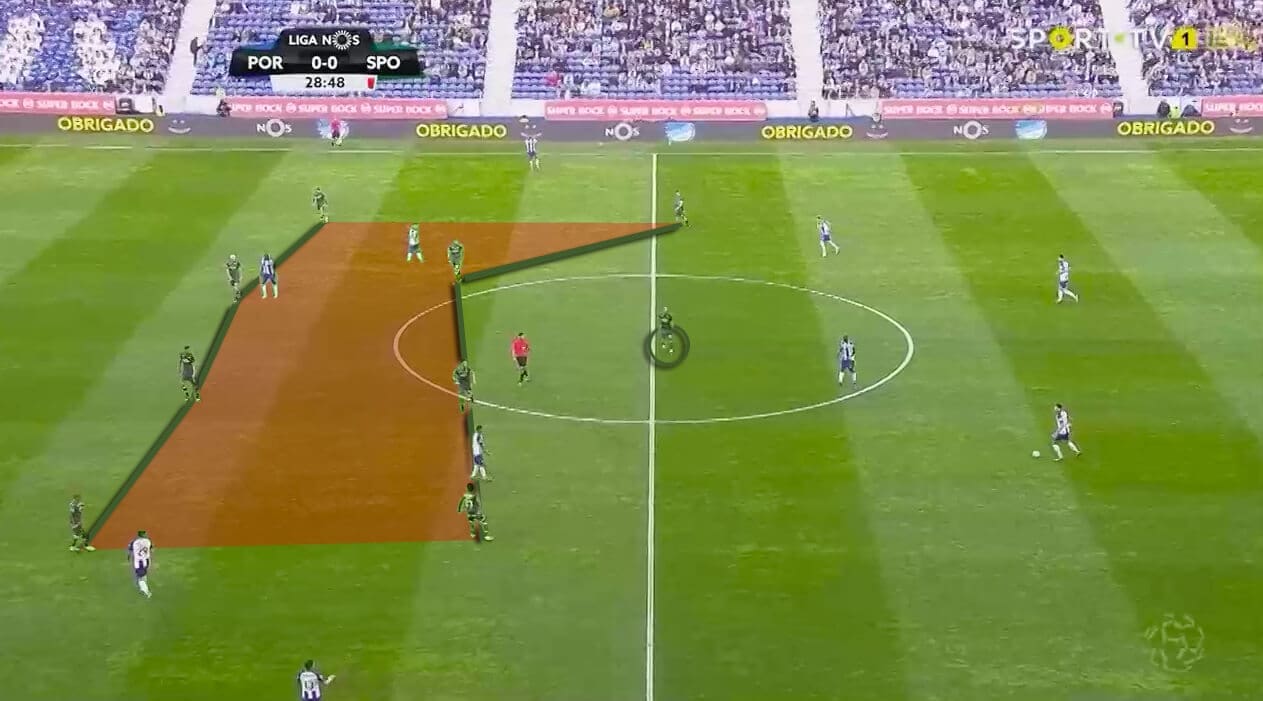
Porto’s harmless crosses
Due to their missing occupation between the lines, Porto attacked a lot down the flanks. However, this approach was not a promising one due to several issues.
At first, Porto often put in crosses too early. As a result, they could not use their numerical superiority in the last third since their midfielders had not been progressed up the pitch.
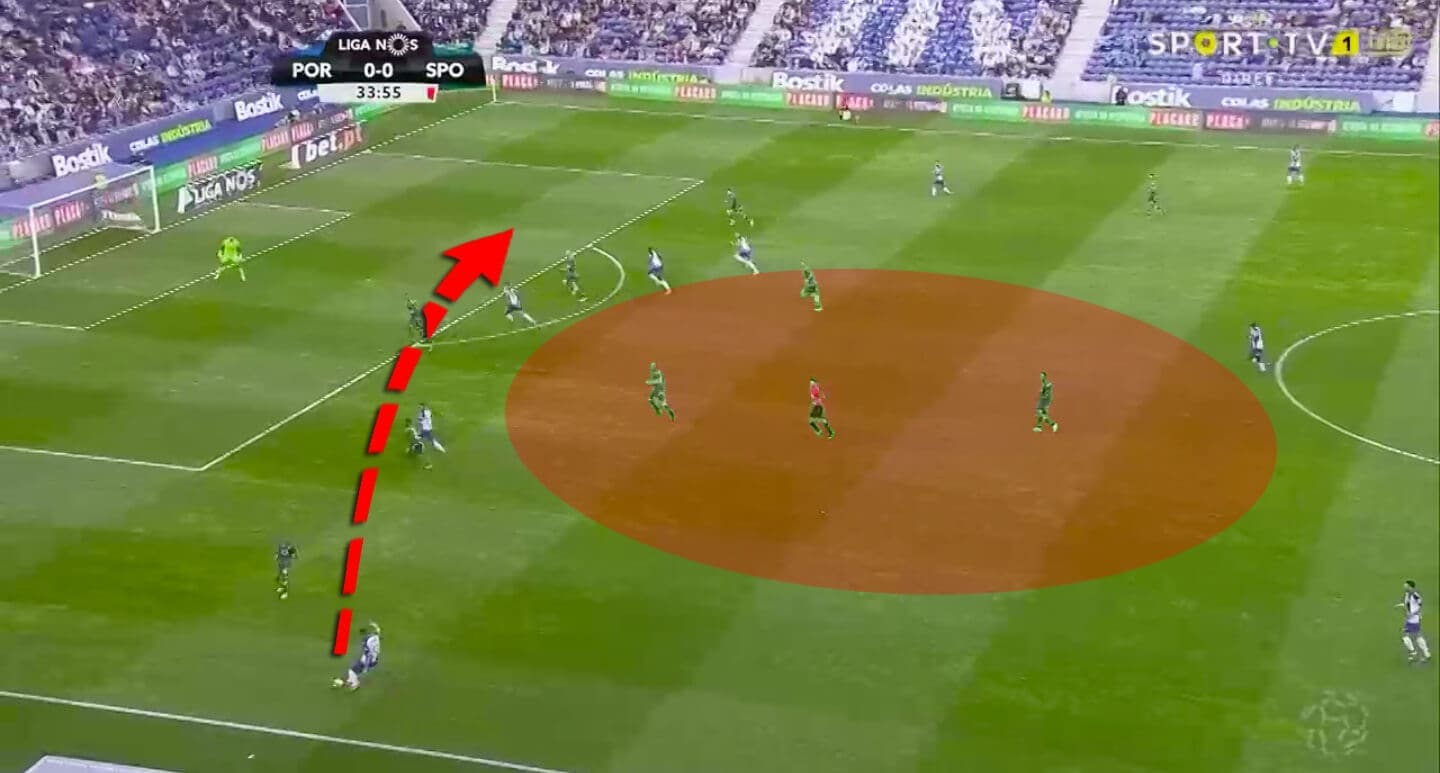
Moreover, Porto also gave up their midfield superiority with this concept. Since all of their advanced players started into the opposition penalty area, Sporting dominated the midfield area in these situations. And Sporting’s defenders could clear the crosses, Porto thereby also wasted the opportunity to gain the rebound.
Last, but not least, the crosses of Porto lacked precision.
Sporting’s effective counter-attack(s)
Sporting rarely had the opportunity to start a counter-attack as the home-side always held enough numbers in the back to stop any possible break.
Nevertheless, one lapse by Porto’s defensive department was penalised severely. Since their defenders all stayed on one side of the pitch after switching play, Porto did not have enough defensive cover near the ball when their midfielder lost possession. As the ball near full-back was about to run forward, Sporting were offered a huge gap.
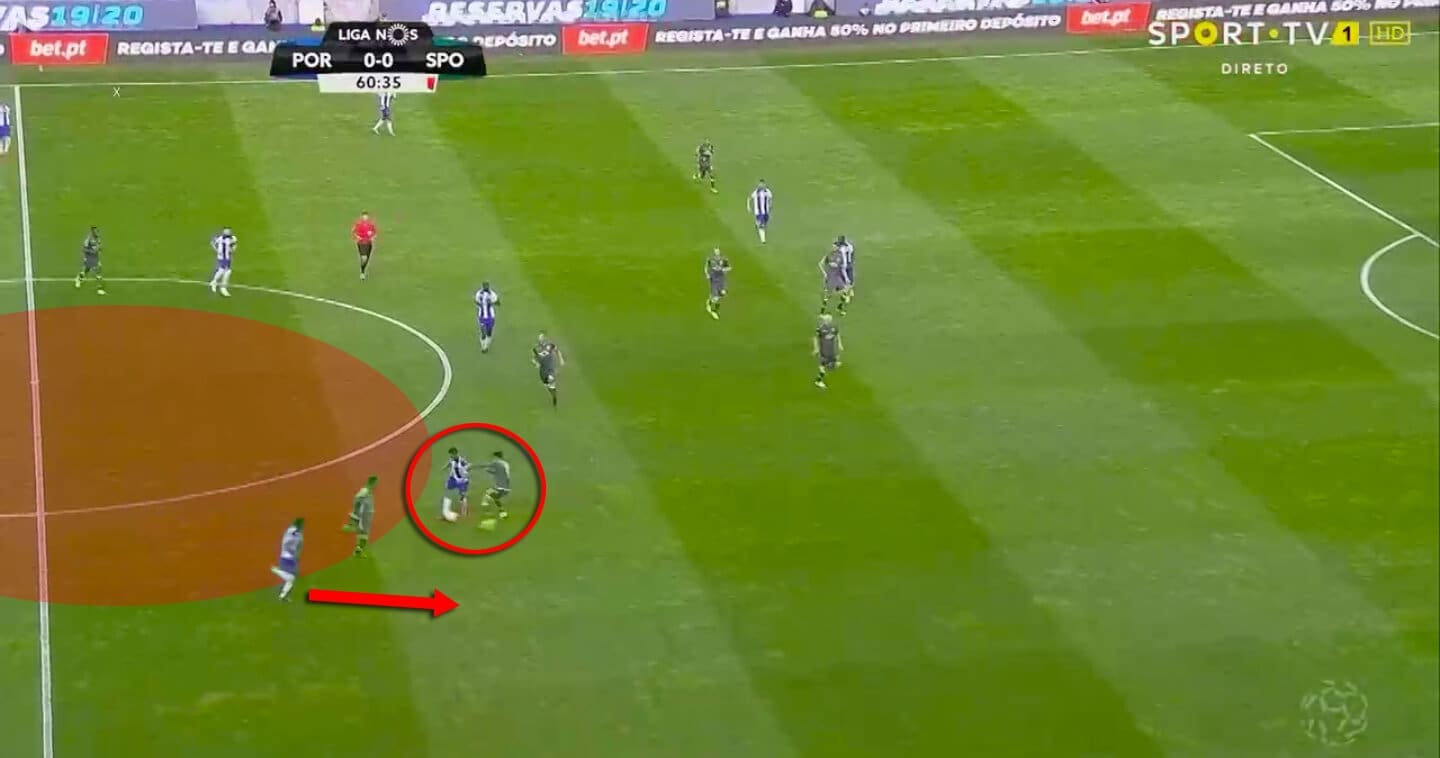
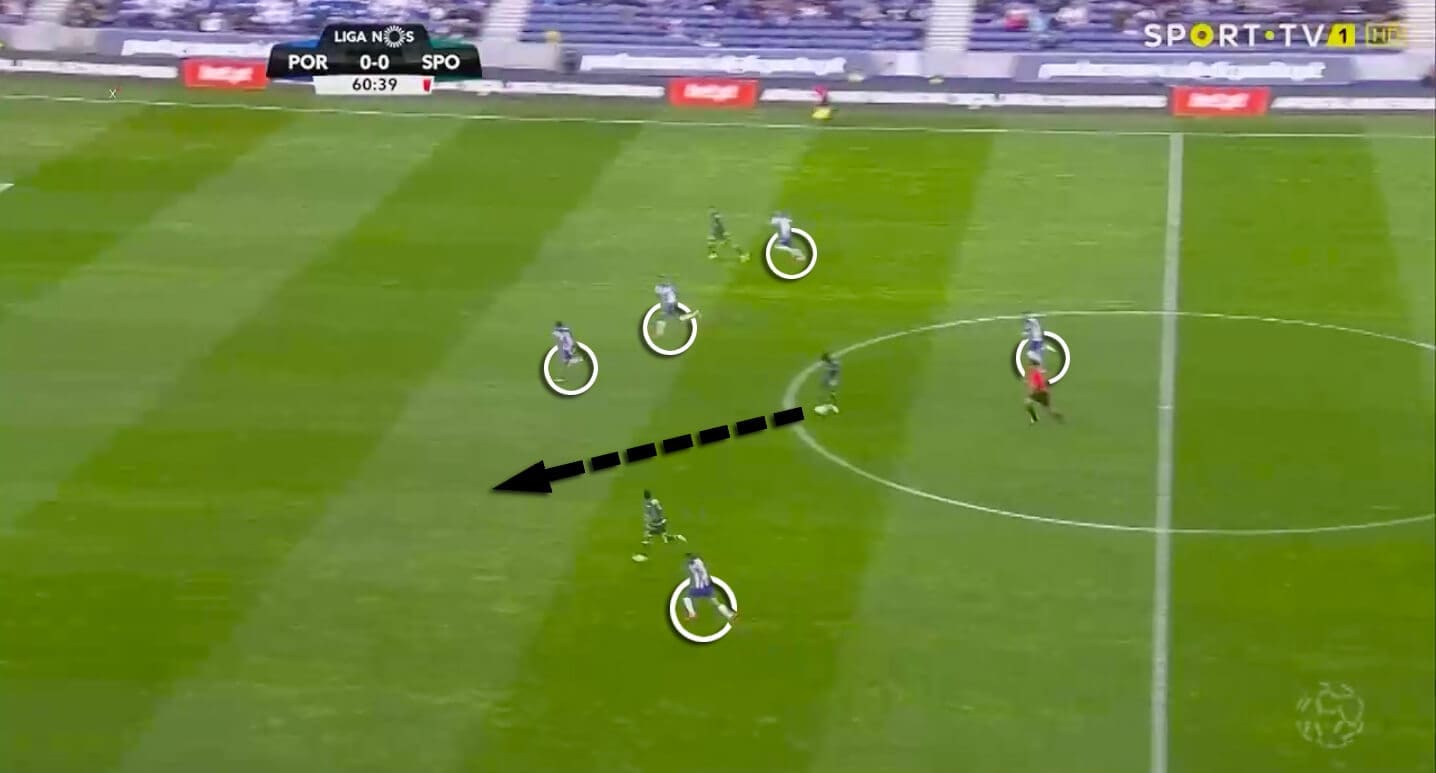
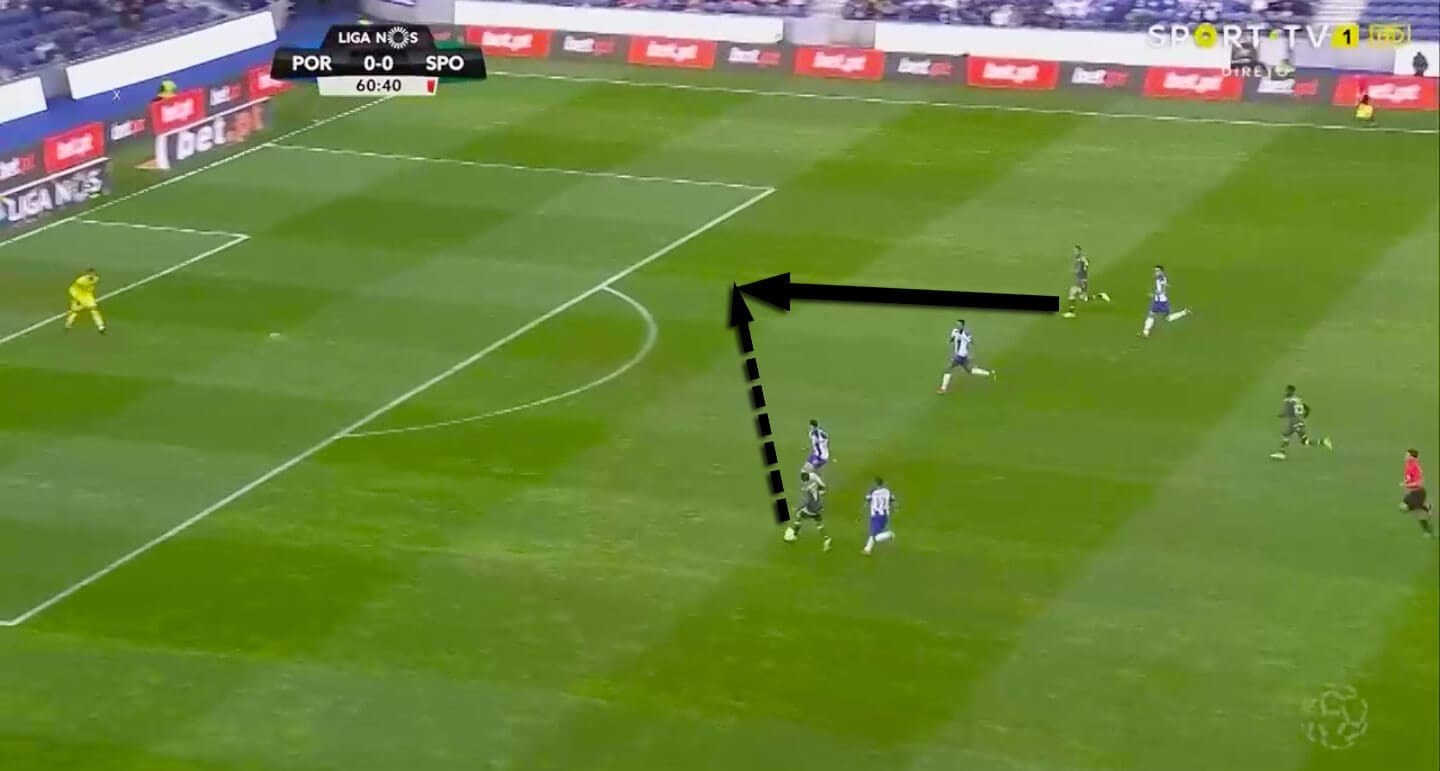
Porto’s improved attacking phase
After Sporting’s leading goal, though, Porto were capable of penetrating the opposition block more often. Instead of putting in crosses from wide areas all the time, they attempted to break Sporting’s back line and create chances with low passes. This was advantageous because they could therewith utilise their numerical advantage and had more control of the ball.
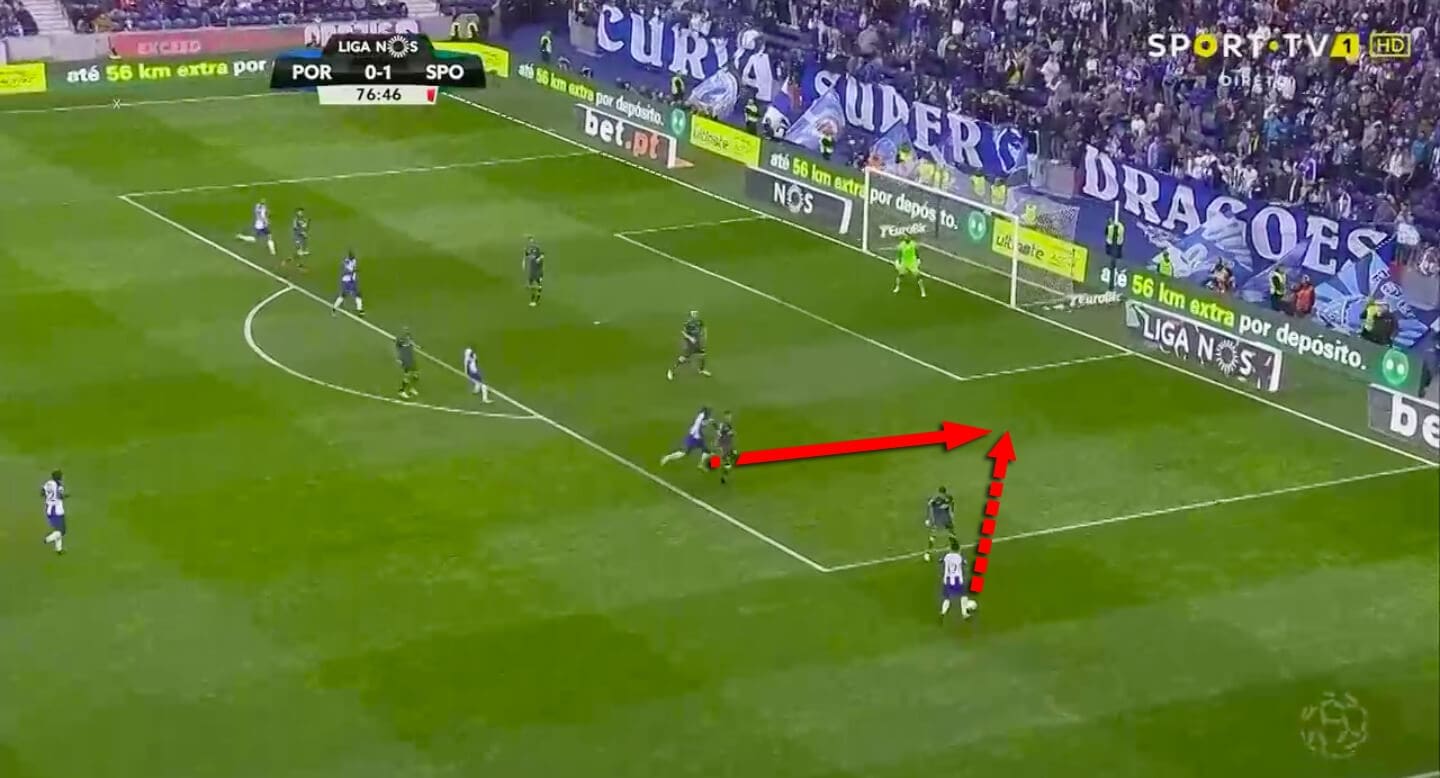
Especially in the final stages of the match, Porto benefitted from the disorganisation of their opponent. Bad staggering of Sporting’s defensive line enabled through passes and therewith the creation of goal scoring opportunities, like in the situation below.
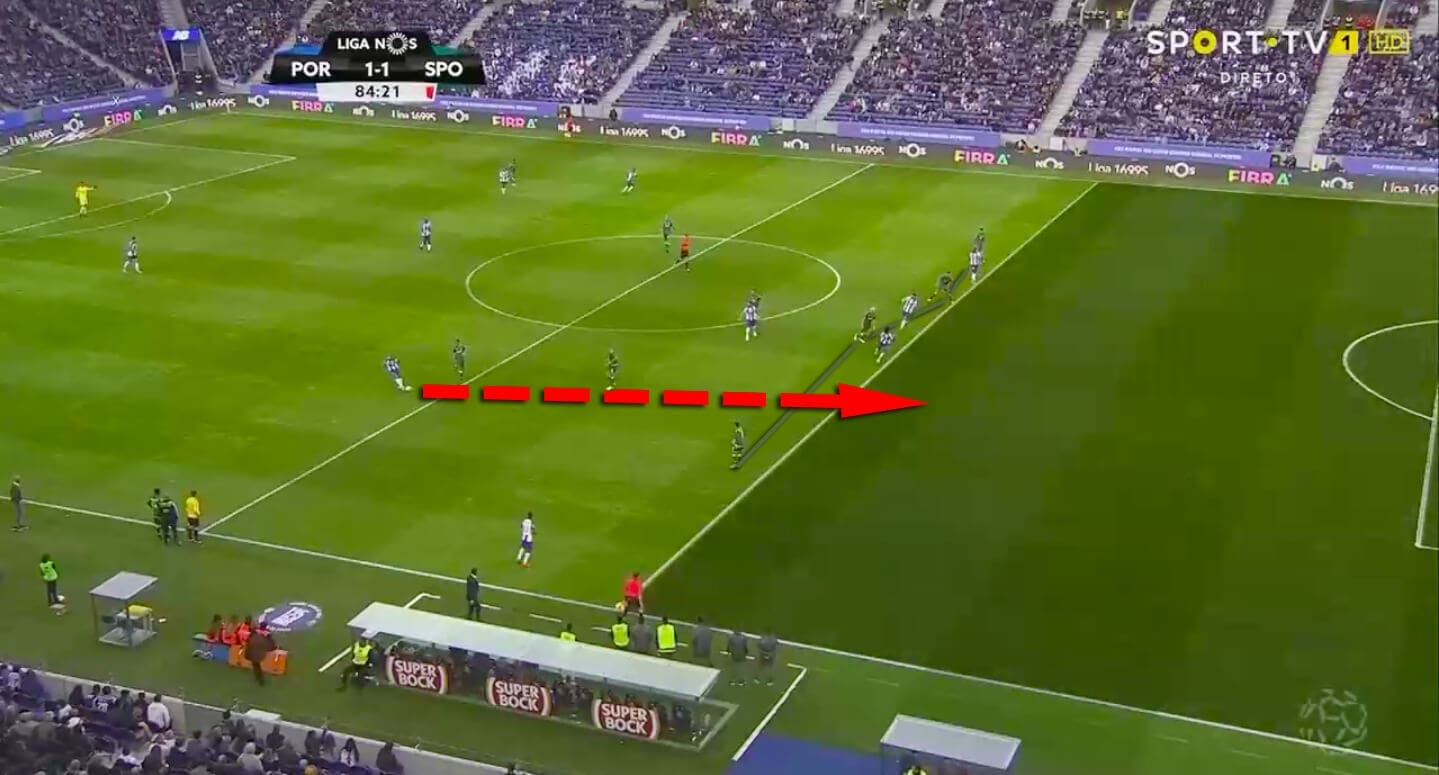
Due to a bad conversion and lack of accuracy in finishing, Conceição’s team were not capable of scoring from open play. They needed set-piece situations to overcome Sporting goalkeeper Renan Ribeiro. But all of their 10 corner-kicks in the second half were an outcome of their improved attacking patterns.
Conclusion
All in all, Porto had much more possession and finally found solutions against Sporting’s defensive block in the second half. Nevertheless, they needed corner-kicks to score the goals which turned the game around as they missed huge chances from open play.
Sporting prevented Porto from creating good chances for a long time despite their numerical disadvantage. However, their attacking threat was non-existent for most parts of the game. Therefore, Porto deserved the win against a decimated Sporting side. Since Benfica also won their match against Santa Clara, Porto finish in second-place of the Primeira Liga, though.
If you love tactical analysis, then you’ll love the digital magazines from totalfootballanalysis.com – a guaranteed 100+ pages of pure tactical analysis covering topics from the Premier League, Serie A, La Liga, Bundesliga and many, many more. Buy your copy of the May issue for just ₤4.99 here, or even better sign up for a ₤50 annual membership (12 monthly issues plus the annual review) right here.

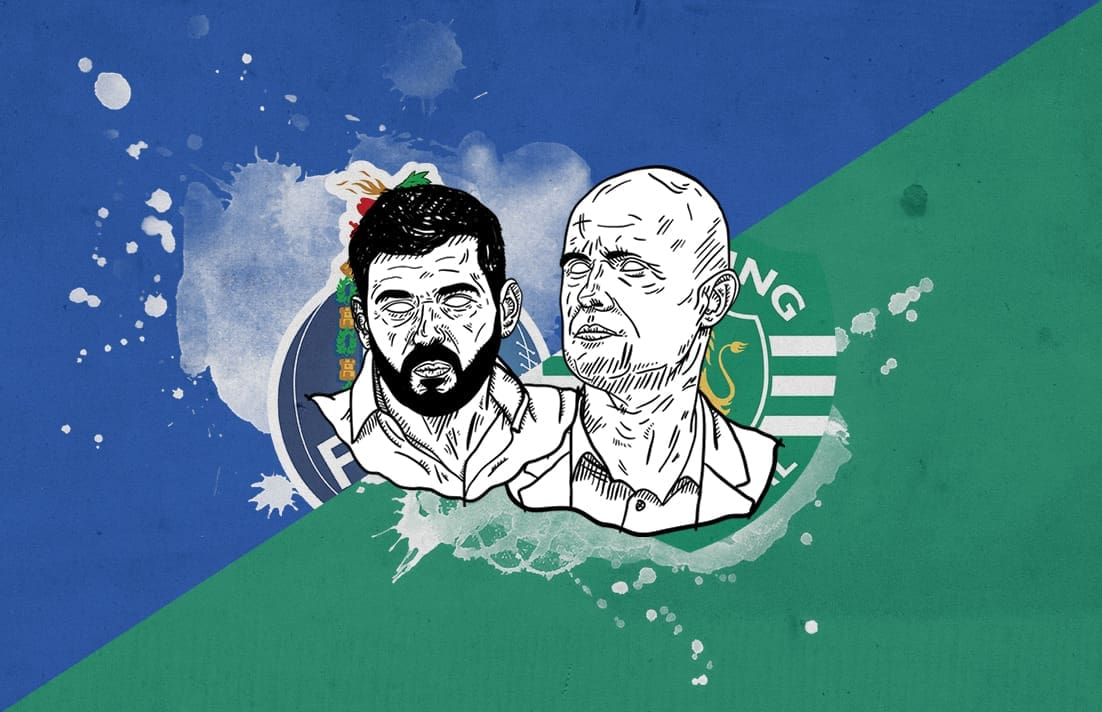



Comments